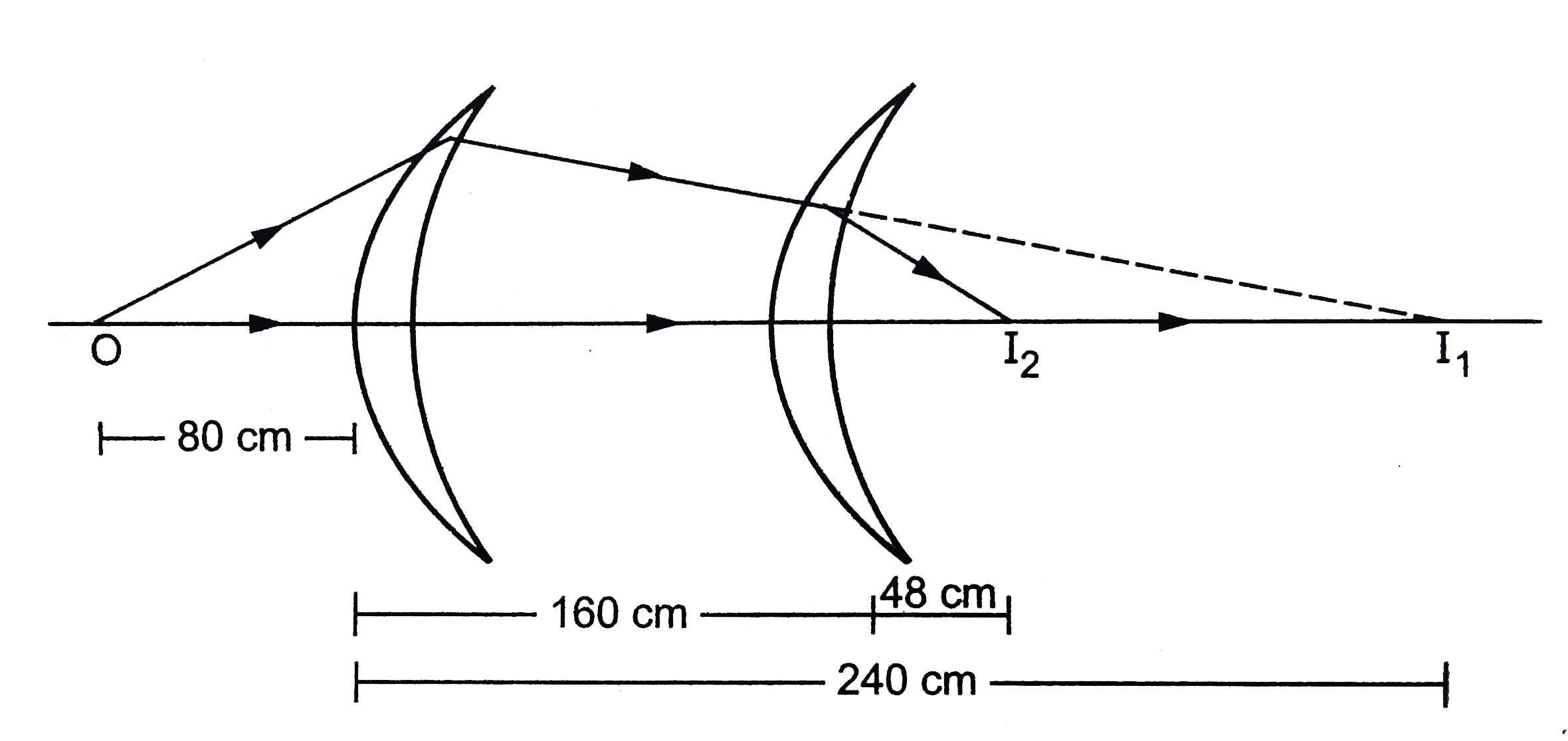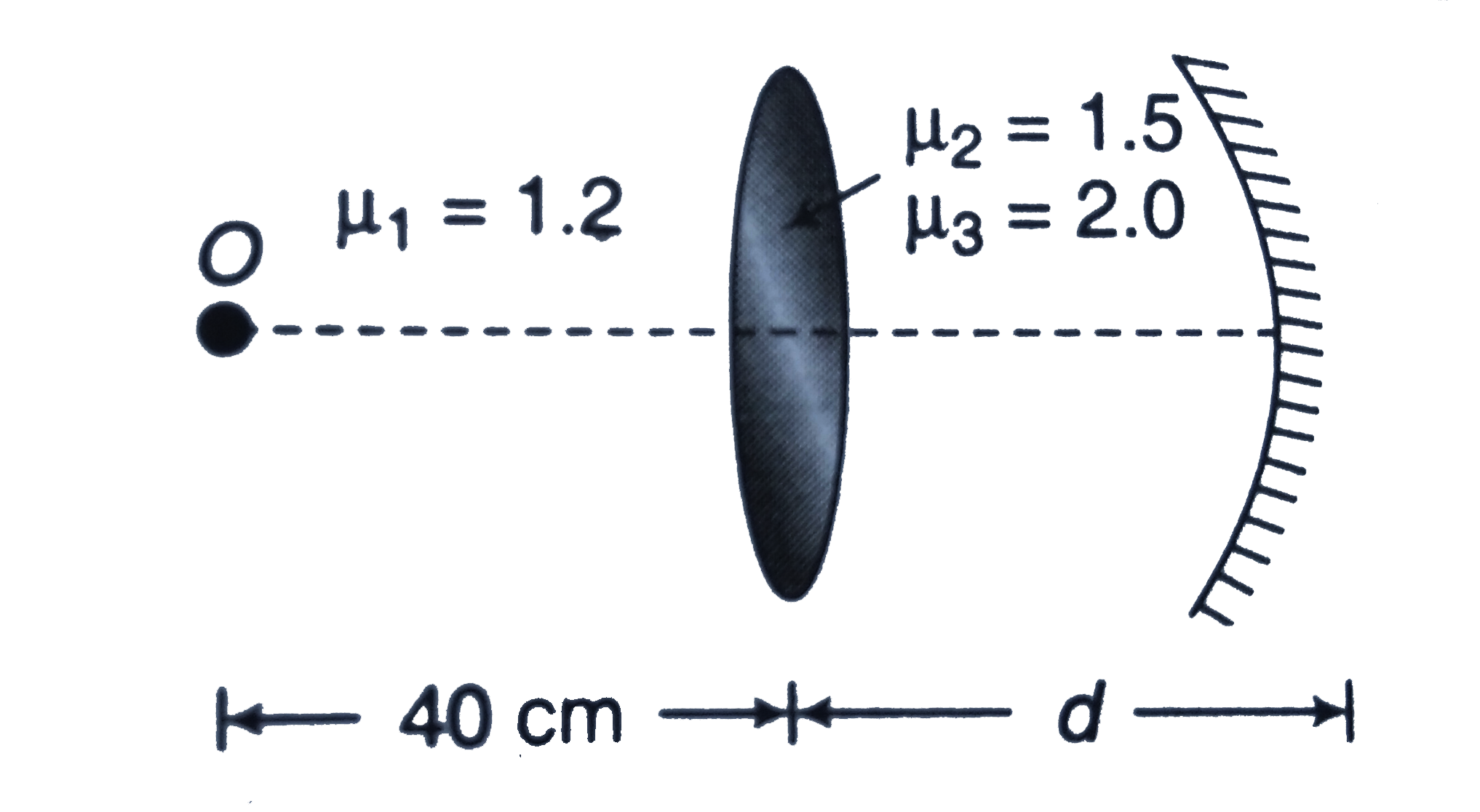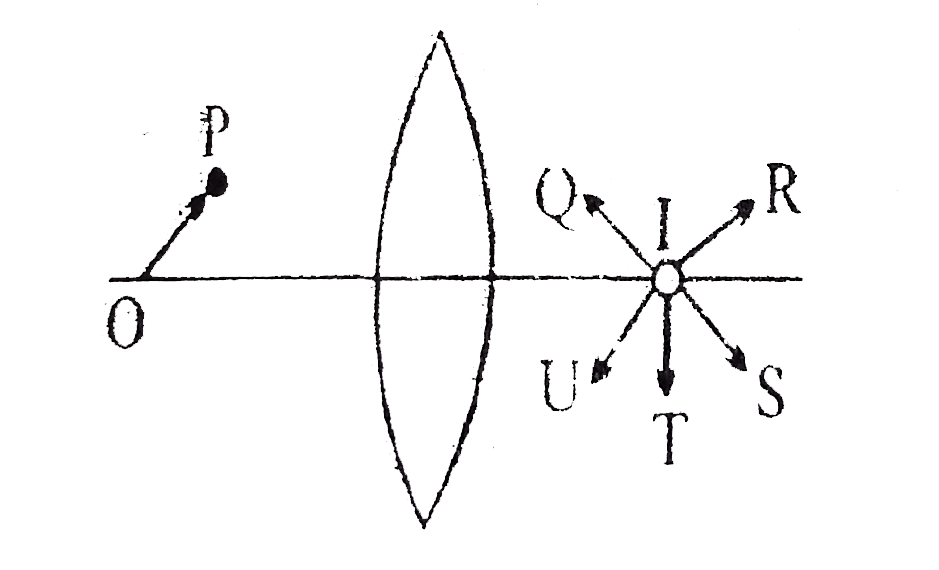A point object is places on the principal axis of a thin lens with parallel curved boundaries, i.e., having same radii of curvature. Discuss about the position of the image formed.
1f=(nrel−1)(1R1−1R2)=0 [∵R1=R2]
1v−1u=0 or v=u ,
i.e., rays pass without appreciable bending.
Topper's Solved these Questions
- BOOK - CENGAGE PHYSICS ENGLISHCHAPTER - GEOMETRICAL OPTICSEXERCISE - Solved Examples15videos
GEOMETRICAL OPTICS
- BOOK - CENGAGE PHYSICS ENGLISHCHAPTER - GEOMETRICAL OPTICSEXERCISE - Exercise1.114videos
GEOMETRICAL OPTICS
- BOOK - CENGAGE PHYSICS ENGLISHCHAPTER - ELECTRON,PHONTS,PHOTOELECTRIC EFFECT & X-RAYSEXERCISE - dpp 3.315videos
ELECTRON,PHONTS,PHOTOELECTRIC EFFECT & X-RAYS
- BOOK - CENGAGE PHYSICS ENGLISHCHAPTER - HEATING EFFECT OF CURRENTEXERCISE - Thermal Power in Resistance Connected in Circuit27videos
HEATING EFFECT OF CURRENT
Similar Questions
An illuminated object is placed on the principal axis of a converging lens so that real image is formed on the other side of the lens. If the object is shifted a little,
View SolutionA linear object is placed on the axis of a lens. An image is formed by refraction in the lens. For all positions of the object on the axis of the lens, the positions of the image are always between the lens and the object.
(i) Name the lens.
(ii) Draw a ray diagram to show the formation of the image of an object placed in front of the lens at any position of your choice except infinity.View SolutionAn extended object of size 2mm is placed on the principal axis of a converging lens of focal length 10cm. It is found that when the object is placed perpendicular to the principal axis the image formed is 4mm in size. The size of image when it is placed along the principal axis is ____________ mm.
View SolutionA concave convex figure lens made of glas (μ=1.5) has surface of radii 20 cm and 60 cm. a. Locate the image ofan object placed 80 cm to the left of the lens along the principal axis. B. A similar lens is placed coaxially at distanc of 160 cm right of it. Locate the position of the image.
 View Solution
View SolutionThe figure shows an arrangement of an equi-convex lens and a concave mirror. A point object O is placed on the principal axis at a distance 40cm from the lens such that the final image is also formed at the position of the object. If the radius of curvature of the concave mirror is 80cm, find the distance d. Also draw the ray diagram. The focal length of the lens in air is 20cm.
 View Solution
View SolutionA point object O moves from the principal axis of a converging lens in a direction OP. I is the image of O, will move initially in the direction
 View Solution
View SolutionA thin biconvex lens of refractive index 3/2 and radius of curvature 50cm is placed on a reflecting convex surface of radius of curvature 100cm. A point object is placed on the principal axis of the system such that its final image coincides with itself. Now, few drops of a transparent liquid is placed between the mirror and lens such that final image of the object is at infinity. Find refractive index of the liquid used. Also, find the position of the object.
View SolutionA convex lens of focal length f and a plane mirror are y distance apart. An object O is kept on the principal axis of the lens at a distance x from the lens. The values of x and y for the final image of O to fall exactly (position and size) on the object O are :
 View Solution
View SolutionA point object O is placed on the principal axis of a convex lens of focal length f=20cm at a distance of 40 cm to the left of it. The diameter of the lens is 10. An eye is placed 60 cm to right of the lens and a distance h below the principal axis. The maximum value of h to see the image is
View SolutionPoint object O is placed on the principal axis of a convex lens of focal length 20cm at a distance of 40 cm to the left of it. The diameter of the lens is 10cm to the right of the lens at a distance h below the principal axis, then the maximum value of h to see the image will be
View Solution

